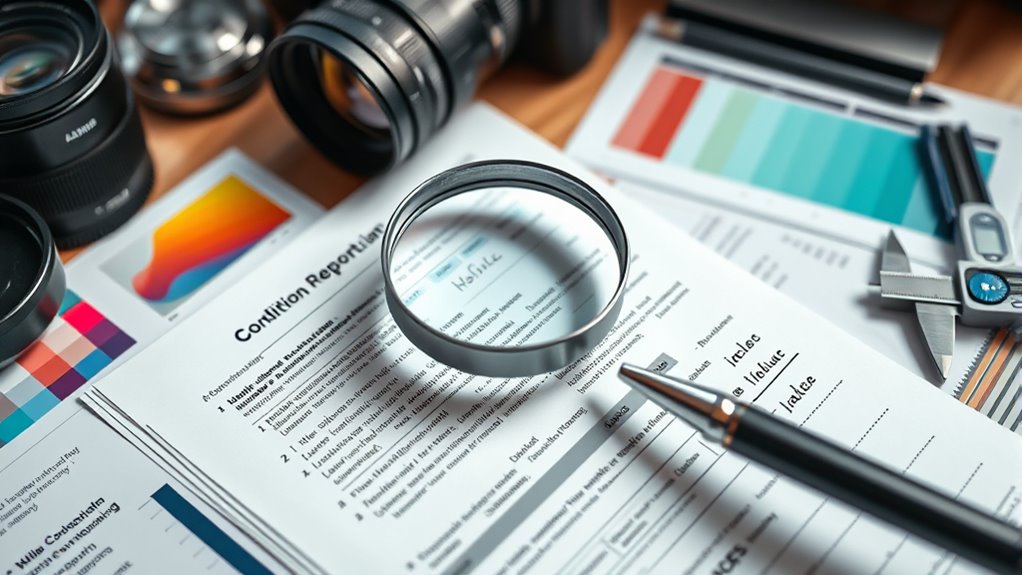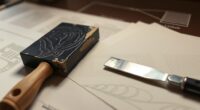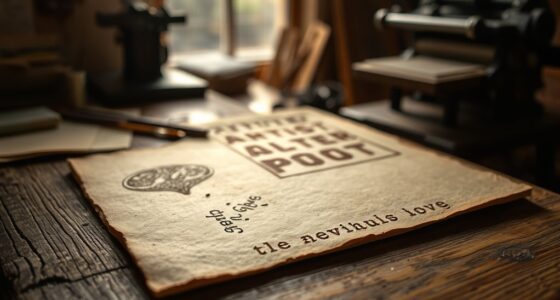To read condition reports like a pro, start by understanding their layout and common terminology to quickly grasp key details. Focus on surface integrity, noting any cracks, repairs, or irregularities that indicate damage or restoration. Look for signs of authenticity, such as provenance labels or signatures, and watch for red flags like mismatched repairs or altered surfaces. Mastering these steps helps you evaluate quality and make informed decisions, and if you keep exploring, you’ll gain even deeper insights.
Key Takeaways
- Familiarize yourself with standard terminology, layout, and iconography used in condition reports.
- Focus on surface integrity, noting cracks, dents, and finish inconsistencies for overall assessment.
- Identify signs of repairs or restorations through mismatched paint, irregular textures, or hardware clues.
- Cross-reference provenance details, signatures, and documentation to verify authenticity and detect red flags.
- Systematically analyze each area or item, noting severity levels and recommended actions for accurate interpretation.
Understanding the Layout and Format of Condition Reports
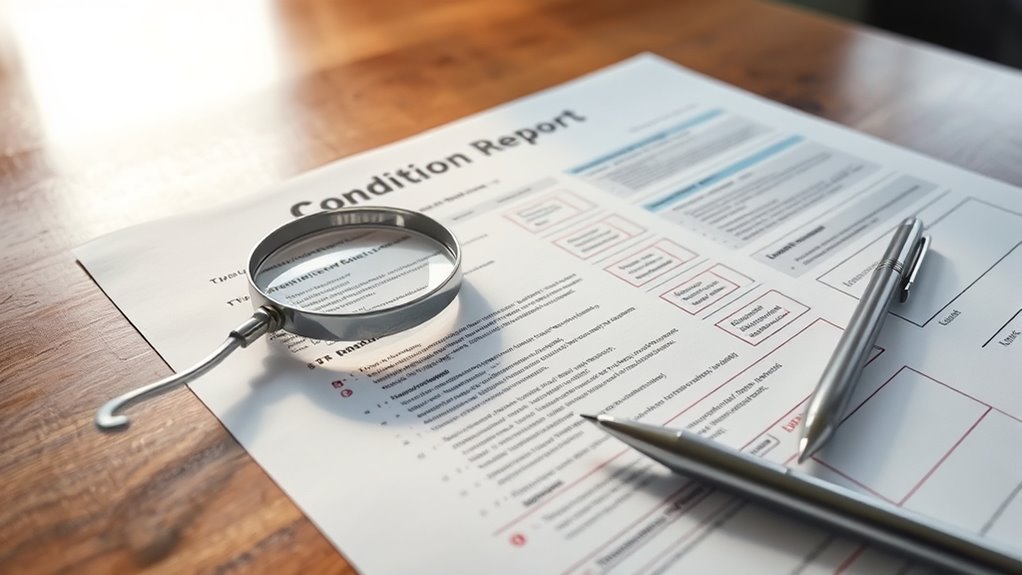
Have you ever looked at a condition report and felt overwhelmed by its structure? That’s common, but understanding the layout makes it easier. Most reports use a clear report structure, dividing information into sections like general details, specific observations, and recommendations. Pay attention to color coding—these colors quickly highlight the severity or priority of issues, helping you prioritize repairs or inspections. The report typically starts with an overview and then breaks down each area or item systematically. Recognizing how information is organized allows you to navigate efficiently and avoid missing key details. Additionally, many reports incorporate visual cues such as icons or color codes to quickly convey the urgency of issues. Once you’re familiar with the layout and how color coding is used, reading condition reports becomes a straightforward process, saving you time and ensuring you grasp all necessary information accurately.
Recognizing Common Terminology and Descriptions
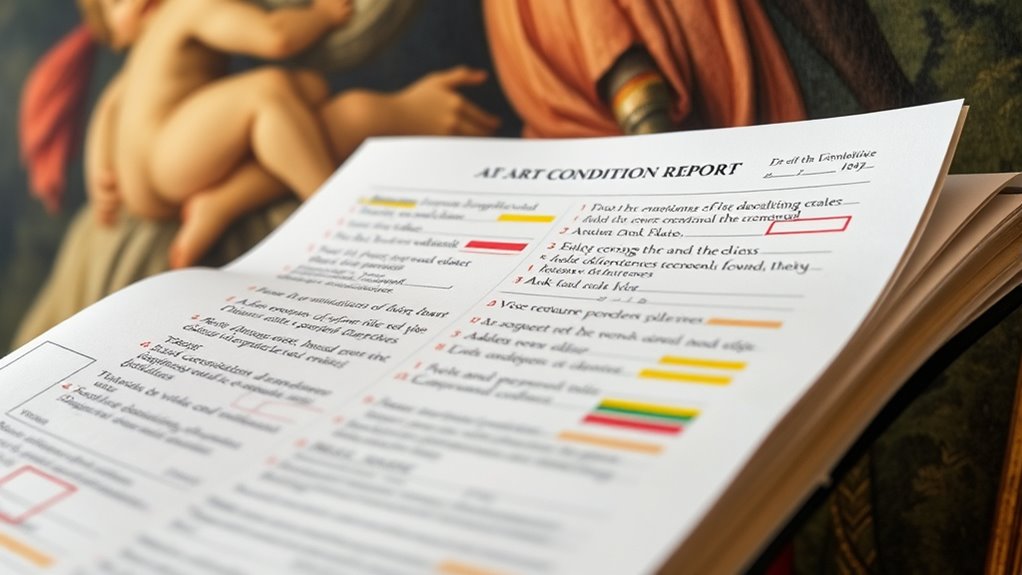
Understanding the common terminology and descriptions in condition reports is essential for accurate interpretation. You’ll encounter terms that describe artistic techniques, like “impasto” or “glazing,” which reveal how an artwork was created. Recognizing descriptions related to material composition helps you identify the types of materials used, such as oil paint, canvas, or bronze. Familiarity with these terms allows you to understand the significance of listed issues, like “cracking” or “crazing,” which can relate to the artwork’s technique or materials. Knowing these standard descriptions helps you assess the artwork’s condition more effectively. Additionally, understanding the living room environment and how it affects artwork preservation can provide context for interpreting reports. By mastering this terminology, you gain confidence in evaluating reports and ensuring you understand the artwork’s current state and any necessary conservation or restoration needs.
Assessing the Overall Condition and Quality Indicators

When evaluating the overall condition, you should focus on surface integrity and how well the piece has been preserved. Authenticity and craftsmanship also play a key role in understanding the item’s value and quality. Paying attention to these indicators helps you quickly gauge the object’s true condition and significance. Additionally, understanding building techniques can provide further insight into the item’s origin and durability.
Surface Integrity Assessment
How can you accurately gauge the overall condition of a component? Start by examining surface integrity closely. Look for surface flaws like scratches, cracks, or dents that could compromise the item’s quality. Pay attention to finish consistency—are the surfaces smooth, uniform, and free of blemishes? Variations in finish might indicate repairs or previous damage. A thorough surface assessment helps you identify imperfections that could affect performance or value. Keep in mind, a well-maintained surface typically signals good overall condition. Conversely, irregularities suggest wear or mishandling. By systematically inspecting for surface flaws and evaluating finish consistency, you develop a clear understanding of the item’s integrity. Additionally, assessing surface corrosion or oxidation provides insight into environmental exposure and preservation efforts. This focused approach ensures you accurately interpret the condition report and make informed judgments.
Authenticity and Craftsmanship
Evaluating the overall condition and quality indicators of a component involves verifying its authenticity and craftsmanship. You should carefully examine authenticity verification methods, such as checking for official markings, signatures, or certificates that confirm the item’s origin. Look closely at craftsmanship details like precision in construction, fine finishes, and uniformity in joints or engravings, which reflect the skill behind the piece. Authentic items often display subtle signs of quality that counterfeit versions lack, such as consistent weight, high-quality materials, or precise detailing. By scrutinizing these aspects, you certify you’re appraising genuine craftsmanship and not just surface appearances. Additionally, understanding the importance of emotional alignment can help assess the true value of a relationship, much like evaluating an item’s integrity. This thorough evaluation helps you determine the true value and integrity of the item, giving you confidence in your understanding of its overall condition.
Identifying Repairs, Restorations, and Alterations
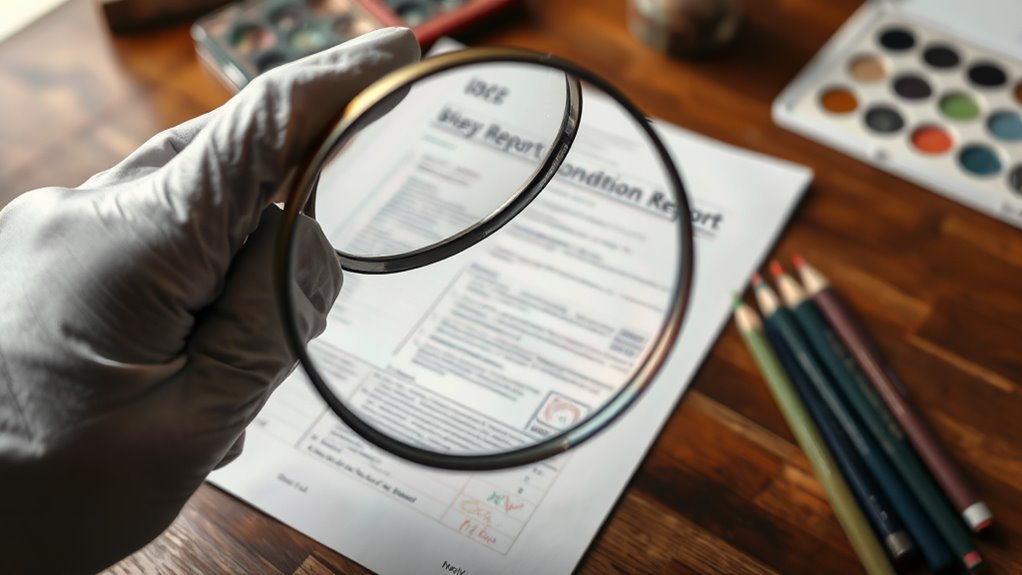
You need to learn how to spot signs of repairs, restorations, and alterations in condition reports. Look for repair signatures and clues that indicate restorative work has been done. Recognizing these details helps you understand an item’s true history and value. Additionally, paying attention to color accuracy can reveal if a projector has been calibrated or modified to enhance visual performance.
Detecting Repair Signatures
Detecting repair signatures requires a keen eye for subtle differences in the surface and structure of an object. Look for restoration clues like mismatched paint, inconsistent grain patterns, or uneven surfaces that suggest alterations. Signature analysis helps identify these signs, revealing where repairs may have been made. Notice irregularities in joints, seams, or hardware that seem out of place or don’t align with the original craftsmanship. Color variations or over- or under-sanded areas can also indicate restorative work. Developing this skill involves comparing suspected areas to intact sections, sharpening your ability to spot signs of repair and better interpret the condition report. Paying attention to cosmetic discrepancies can further enhance your detection skills by revealing hidden restorations.
Spotting Restorative Work
Have you ever wondered how to spot signs of restorative work that aren’t immediately obvious? Recognizing restorative techniques requires careful observation of subtle clues. Look for inconsistencies in surface texture or finish, which may indicate repair signatures. Changes in material color, sheen, or grain can also suggest recent restoration. Pay attention to unnatural joint lines or uneven edges that don’t match the original craftsmanship. Variations in tool marks or brush strokes may reveal underlying repairs. Additionally, consider if the piece shows evidence of adhesive residues or fills that differ from the original material. These subtle hints help you identify restorative work, giving you a more all-encompassing understanding of a piece’s history. Mastering these signs sharpens your ability to assess condition reports accurately. Understanding restorative techniques enhances your capability to evaluate the authenticity and integrity of a piece.
Recognizing Alteration Clues
Spotting subtle signs of alteration requires careful attention to detail beyond surface appearances. Look for artificial aging, where materials or finishes seem artificially distressed or weathered, inconsistent with the piece’s age. Color inconsistencies are also key indicators; mismatched hues or uneven shading might suggest repairs or added elements. Examine brushstrokes, varnish layers, and patinas for irregularities that don’t align with the original craftsmanship. Pay close attention to areas where the surface feels different or appears smoother, indicating possible restorations. Changes in texture, gloss, or apparent new material can reveal underlying alterations. Recognizing these clues helps you distinguish genuine features from repairs or modifications, ensuring a more accurate assessment of the piece’s authenticity and condition. Additionally, understanding surface treatments can aid in identifying modern interventions that are not immediately obvious.
Examining Documentation of Damage or Wear
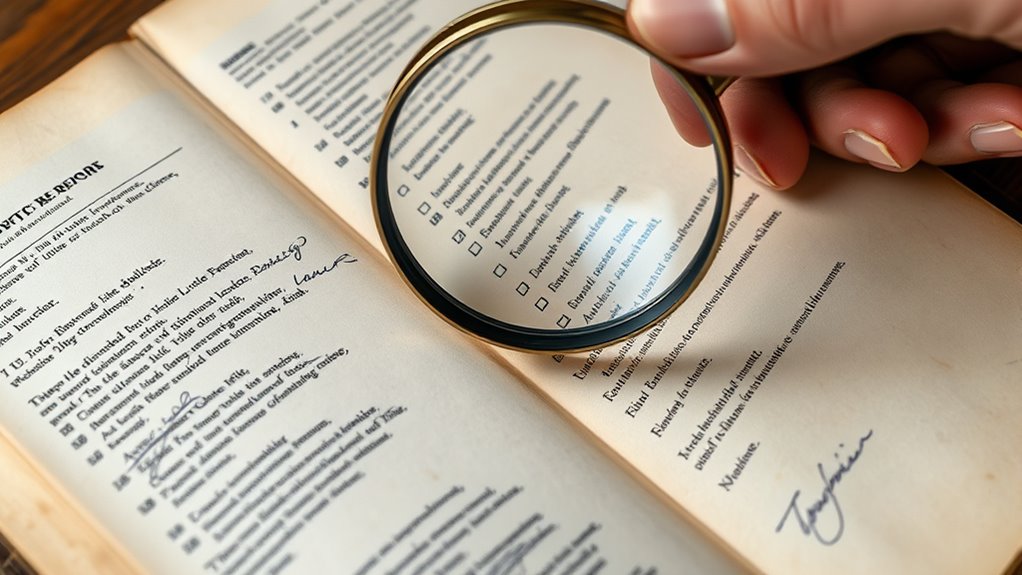
How can you accurately assess the condition of an item by examining its documentation? Start by scrutinizing detailed notes on damage or wear. Look for indications of past repairs, chips, or scratches that might affect value. Pay attention to how the furniture finish shows signs of aging or deterioration, which can reveal previous issues. Hardware details are also vital—note if screws, hinges, or handles have been replaced or show signs of corrosion. Consider the consistency of wear patterns and whether repairs align with the item’s age. Well-documented damage reports help you gauge authenticity and condition. Additionally, understanding gelato flavors and ingredients can provide insight into the quality and freshness of similar food items, which is useful when evaluating product documentation.
Interpreting Authenticity and Provenance Details
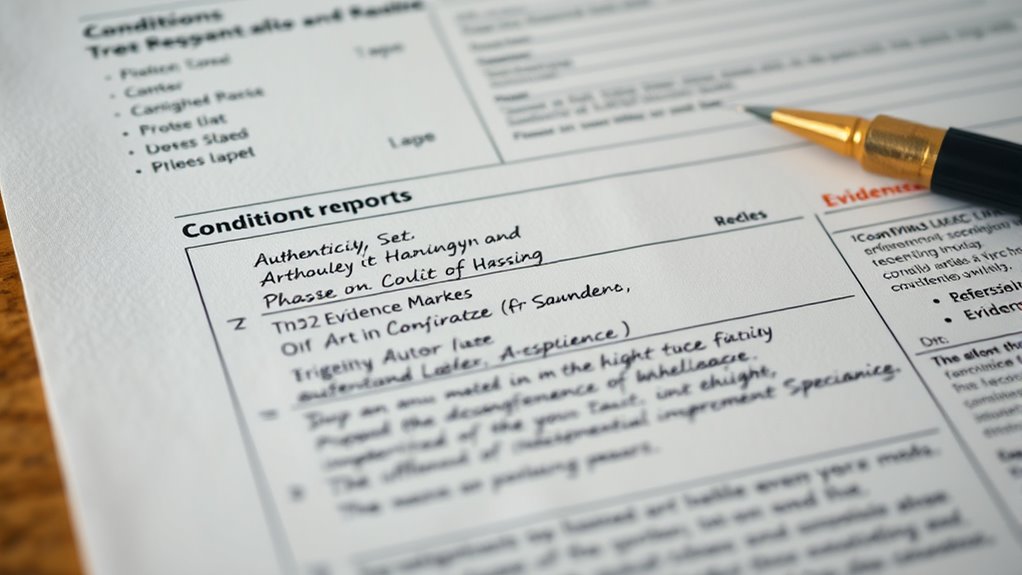
Interpreting authenticity and provenance details requires careful attention to the documentation and markings that verify an item’s origin. Start by examining artwork framing, as labels or stamps on the back can confirm the artist, gallery, or exhibitor. Look for gallery labels that indicate provenance history, showing where the piece has been displayed or sold. Authenticity can often be verified through signatures, stamps, or certificates linked to the artwork’s origin. Guarantee the gallery labels match the documented provenance and check for consistency in dates, titles, and ownership records. These details help confirm the piece’s legitimacy and history. Additionally, understanding forsale 100 can assist in recognizing valuable or authentic items. By scrutinizing these elements, you’ll better understand the artwork’s background and avoid potential forgeries or misrepresented pieces.
Spotting Red Flags and Warning Signs
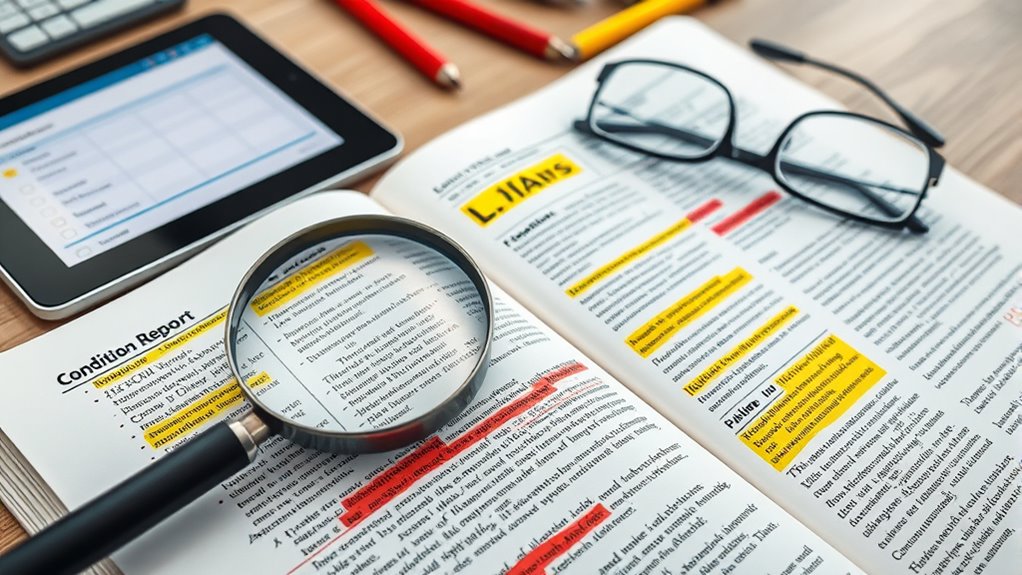
Recognizing red flags and warning signs is crucial to avoiding counterfeit or compromised artworks. Pay close attention to inconsistencies that could indicate tampering or deterioration. Look out for fading signatures, which may suggest attempts to obscure genuine authorship. Suspicious discoloration, such as uneven patches or unnatural hues, can signal previous restorations or exposure to harmful conditions. Other warning signs include:
- Cracks or bulges beneath the surface
- Unusual surface textures or gloss
- Inconsistent varnish layers
- Signs of over-cleaning or abrasion
- Excessive or uneven restorations
Being alert to these indicators helps you identify potential issues early, safeguarding your investment and ensuring authenticity. Additionally, caffeine content in certain materials used for restoration or preservation can sometimes affect the artwork’s condition over time. Always cross-reference these signs with other condition details for a thorough assessment.
Applying Your Knowledge to Make Informed Decisions
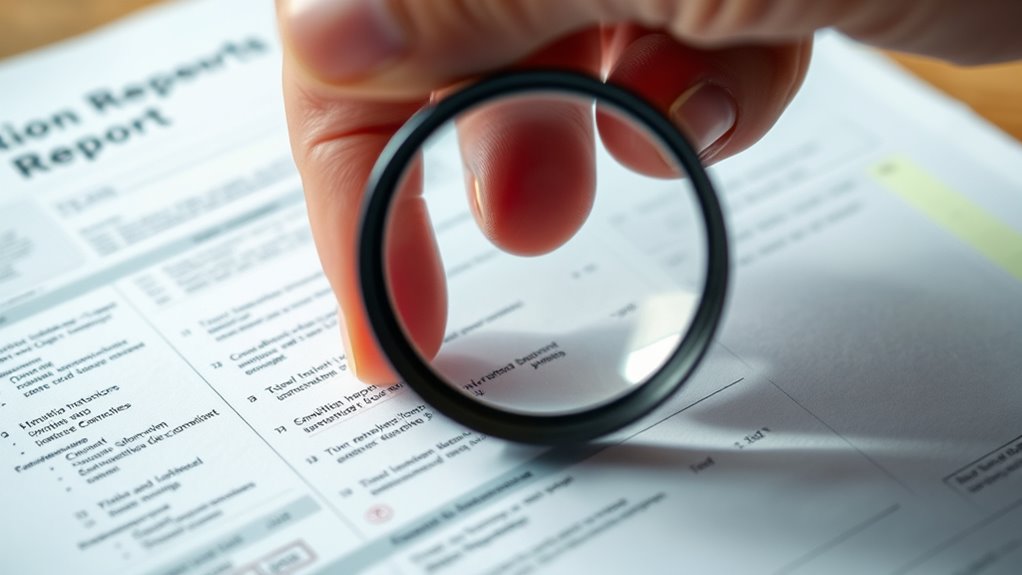
Once you’ve identified red flags and warning signs, you can confidently use that knowledge to make smarter decisions about artworks. Applying your understanding helps you evaluate whether an artwork needs museum conservation or professional restoration. Use art appraisal techniques to assess the artwork’s condition, authenticity, and value accurately. If you notice damage or deterioration, consider how it impacts the piece’s long-term preservation and market worth. Your insights enable you to negotiate effectively or decide if an artwork is worth investing in. Remember, informed decisions stem from a clear understanding of condition reports and their implications. For example, understanding alimony laws can help in negotiations related to divorce settlements involving artwork or assets. By combining your knowledge of red flags with appraisal methods, you can approach each artwork confidently, ensuring you protect your interests and support proper conservation efforts.
Frequently Asked Questions
How Can I Verify the Authenticity of Condition Reports?
To verify the authenticity of condition reports, you should focus on authenticity verification and report validation. Check the report’s source, guaranteeing it comes from a reputable and authorized entity. Look for official stamps, signatures, or digital verification marks. Cross-reference details with previous reports or related documentation. If anything seems inconsistent or suspicious, seek expert opinions. Validating the report helps you confirm its credibility and ensures you’re making informed decisions based on genuine information.
What Are the Best Resources for Understanding Rare Terminology?
Ever wondered what those rare terms mean? You should explore top glossary resources, which decode complex terminology and keep you in the know. Don’t forget, expert consultations are invaluable—they provide insights you can’t find online. Combining these resources will sharpen your understanding and boost your confidence when reading condition reports. Stay curious, ask questions, and soon you’ll master even the most obscure vocabulary with ease.
How Do I Estimate a Item’s True Value From a Report?
To estimate an item’s true value from a report, you should apply valuation techniques like comparing the report’s details with similar items and recent sale prices. Look for key condition factors, rarity, and provenance. Conduct a report comparison to spot discrepancies or patterns that influence worth. By analyzing these elements critically, you can make a well-informed estimate, ensuring your valuation reflects the item’s actual market value accurately.
What Common Mistakes Should I Avoid When Interpreting Reports?
When interpreting reports, avoid misreading terminology and overlooking context, as these mistakes can lead to misjudging an item’s condition. You might focus too much on individual details without understanding how they relate to overall condition, or misinterpret technical terms. Always double-check terminology and consider the report as a whole. This careful approach helps you accurately assess an item’s true state and avoid costly misunderstandings.
How Can I Spot Subtle Signs of Recent Repairs or Alterations?
You can spot subtle signs of recent repairs or alterations like a detective uncovering hidden damage. Look for repair indicators such as inconsistent paint, new hardware, or uneven surfaces that stand out against the original finish. Pay close attention to seams, joints, and color mismatches, as they reveal hidden damage or recent fixes. These clues help you see past the surface and understand what’s truly been altered or repaired.
Conclusion
By mastering these skills, you’ll confidently evaluate condition reports and make smarter buying decisions. For example, if you notice a subtle restoration detail in a vintage painting’s report, you’ll know to dig deeper or reconsider. With practice, recognizing signs of damage or repairs becomes second nature, helping you avoid costly mistakes. Keep honing your skills, and you’ll become a pro at interpreting condition reports and safeguarding your investments.
